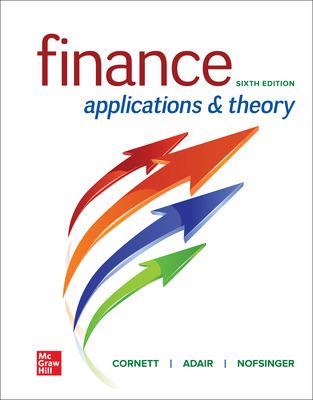Question
Goal: Demonstrate knowledge of the accounting cycle and financial statements through analysis, preparation, and interpretation of accounting data. Prepare general journal entries Post general journal
Goal:
Demonstrate knowledge of the accounting cycle and financial statements through analysis, preparation, and interpretation of accounting data.
Prepare general journal entries
Post general journal entries
Prepare an unadjusted trial balance.
Prepare adjusting journal entries for accruals, deferrals, and depreciation.
Post adjusting entries
Prepare an adjusted trial balance by preparing a worksheet.
Analyze and utilize knowledge for financial reporting.
Prepare financial statements from adjusted account balances. Analyze results of financial statements
What to Do: Part I
For your client, Tyler, you are going to record and post general and adjusting journal entries for the year ended December 31, 2021.
your client, Tyler, you are going to record and post general and adjusting journal entries for the year ended December 31, 2021.
Record the cash activity ONLY as general journal entries on the GJEs and AJEs tab. You can break these up into more journal entries if you like for example, I recorded the equipment purchases in one journal entry and I recorded most of the cash activity in journal entry #4. You can record them separately for each cash transaction if its easier for you. Just expand the spreadsheet and number the journal entries accordingly. Every journal entry must balance between the debit and credit columns.
Post each journal entry to the appropriate T account on the T Account tab. Dont forget to make sure you calculate the total balance per account. You will have either a debit or a credit balance in each T account after you post the transactions. I have not included any formulas to auto calculate the totals.
Complete the unadjusted trial balance located on the Trial Balance tab by taking the balance of each of the T accounts and entering them into the Unadjusted Trial Balance debit and credit columns. If your column totals do not match, STOP. Go back and make sure you recorded and posted your journal entries correctly.
Record the adjusting entries as adjusting journal entries on the GJEs and AJEs tab.Adjusting journal entries are discussed in Chapter 3 and include:
Depreciation expense
Revenue accruals
Expense accruals
Adjusting prepaids (you have at least three inventory, supplies, and insurance. Your expense that you are recording will adjust the balances on the balance sheet to the required balances noted, above, at December 31)
Post each journal entry to the appropriate T account on the T Account tab. Dont forget to make sure you have recalculated the total balance per account. You will have either a debit or a credit balance in each T account after you post the transactions. I have not included any formulas to auto calculate the totals.
Review the adjusted trial balance located on the Trial Balance tab by making sure that each adjustment that you recorded in #4, above, on the worksheet is added or subtracted from the Unadjusted trial balance total. The formulas should prepopulate the Adjusted Trial Balance, but make sure that they are correct. Youll know that they are correct if (1) these totals match the T account totals after you post the adjusting journal entries to the T accounts in step #5, above and (2) your debit and credit column totals match. If they do not match, STOP. Go back and make sure you recorded and posted your adjusting journal entries correctly. Every journal entry must balance between the debit and credit columns.
CLASSIC UPHOLSTERY SHOP, INC: YOU ARE THE ACCOUNTANT Tyler Smith had worked in an upholstery shop for 10 years. Last year, Tyler's wages were \$20,000. Lately, Tyler had been unhappy with the shop's owner. Convinced that he could run an upholstery shop that did better work at a lower cost, Tyler decided to go into business for himself during 202 land opened Classic Upholstery Shop, Inc. He organized his business as a corporation and deposited $50,000 into a business bank account in exchange for shares of common stock. To get the business going, Tyler decided to invest heavily in advertising. He spent $9,000 on advertising aimed at consumers and another $1,000 on advertising aimed at getting work from interior decorators and interior design stores. Tyler also purchased industrial sewing machines costing $5,000 and other tools and equipment costing $4,000. He estimated that the sewing machines can be used for about five years before maintenance costs will be too high and the machines will need to be replaced. The other tools and equipment are not as durable and will have to be replaced in three years. At the end of the first year of business, Tyler had received $100,000 in cash from customers for upholstery work. Tyler was owed another $5,500 from customers who are not required to pay cash but are billed every 30 days. A review of Tyler's checkbook shows he paid the following expenses in cash (in addition to those mentioned previously) during the first year of business: 1. Upholstery fabric $50,000 2. Other supplies inventory $10,000 3. Wages-part-time assistant $9,500 4. Rent $4,800 5. Insurance (two-year policy) $3,200 6. Utilities $1,200 7. Professional expenses $1,700 8. Tyler's utility bill for the last month of the year has not arrived. He estimates that the bill will be approximately $320. 9. Tyler keeps some stock of upholstery fabric in popular colors on hand for customers who do not want to wait for special-order fabric to arrive. a. At the end of the year, about $14,000 of the fabric purchased during the year was in his store stock. b. In addition, $2,300 in supplies had not been usedStep by Step Solution
There are 3 Steps involved in it
Step: 1

Get Instant Access to Expert-Tailored Solutions
See step-by-step solutions with expert insights and AI powered tools for academic success
Step: 2

Step: 3

Ace Your Homework with AI
Get the answers you need in no time with our AI-driven, step-by-step assistance
Get Started


